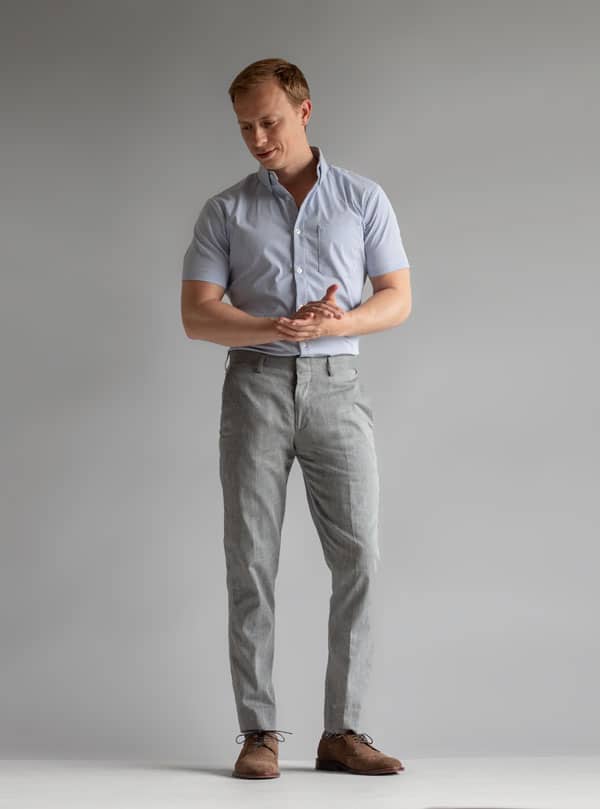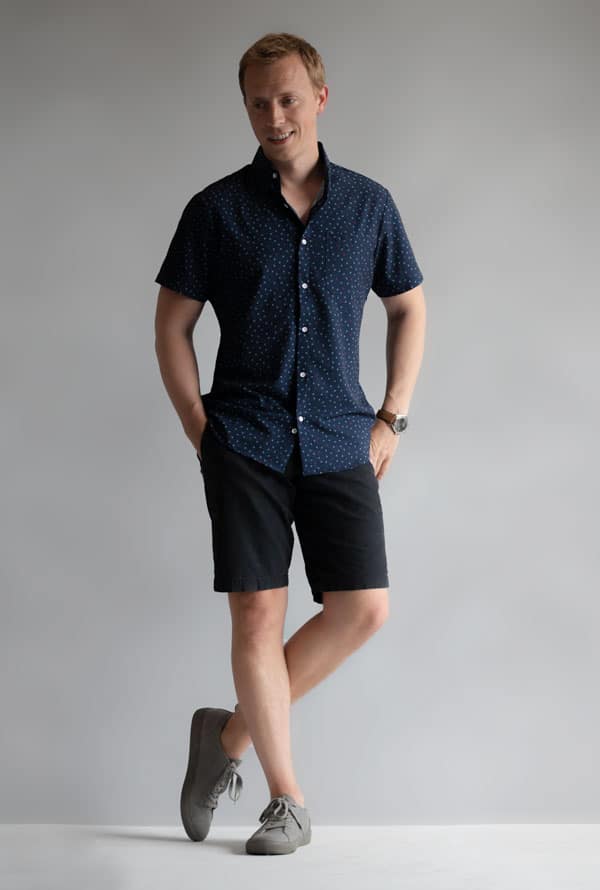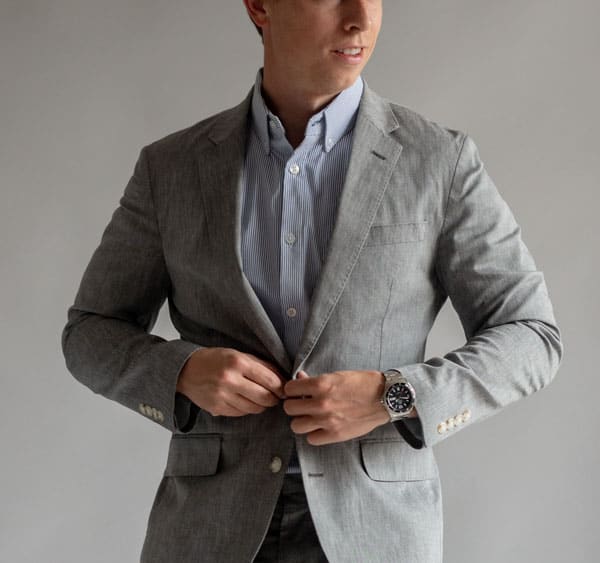America was built with cotton and wool. Cotton denim worn by WPA workers; the standard issue U.S. military white t-shirt; the wool suit worn by Fifth Avenue’s mad men.
Then, a challenger arose: synthetics.
Scientists created fabrics like nylon, polyester, and rayon in the lab and, in a few short decades, they were everywhere. But advances in synthetics have been uneven. No one wears cotton shorts to the gym anymore, but cotton is still the dominant fabric in men’s work wear.
It’s a bit odd, right? We all wear performance synthetics when we hike, run, lift, and lounge… why don’t we don stretchable, breathable, and moisture-shedding Oxfords for the office when temps rise in the summer?
Cotton and wool are great. But natural fibers and synthetics excel at different things, and understanding those distinctions can give you an edge in the hot months – and a huge boost to your confidence.
So we’re introducing three performance fabric button-ups from Mizzen+Main… and re-introducing you to synthetics as a fabric.
A Short History Of Performance Fabrics
The first synthetic fabric was created in the 1890s by Hilaire de Chardonnet using cellulose from plants to create a fabric designed to imitate silk. Nylon, rayon, and polyester followed in the decades after, and by the 1950s, synthetic fabrics were in most American wardrobes, mostly in the form of dresses, rain jackets, and cheap ties.
I just want to take a second to acknowledge the elephant in the room: Wasn’t I always told that synthetics look kind of… cheap?
It’s true. For all of us born before the mid 1990s, polyester has a distinctly downmarket connotation. But synthetics like polyester have undergone decades of innovation and improvement that have allowed their benefits to shine through without sacrificing texture, quality, and durability.
So what makes synthetic blends superior to cotton alone in hot weather?
Cotton Vs. Performance Fabric: How It Feels
There are objective criteria that make cotton different from a performance fabric like polyester, including materials, stretch, and so on.
But first, let’s take a moment to discuss the subjective difference between cotton and performance fabric.
When you put on a premium performance fabric shirt like Mizzen+Main’s McNeal button-up, it feels…airy. It’s a strange sensation for someone used to cotton button-ups, which feel much heavier.
The airy quality in the Mizzen+Main McNeal is down to its fabric – the 85% polyester, 15% spandex blend is significantly lighter than traditional cotton. In fact, all the Mizzen+Main button-ups we tried weigh less than a plain cotton t-shirt.
Cotton is great on a chilly fall or winter day, but when you add heat, moisture, or both to the equation, cotton falters. Why?
Cotton Vs. Performance Fabric: Structure & Function
Now on to the objective differences between cotton and performance synthetics.
Cotton is a natural fiber that consists mainly of cellulose, which means that it is comfortable and stands up to heat and bleach in the wash. It’s also great at absorbing moisture without stretching, which is fine for bath towels, but not as much for work shirts.
Performance blends are also highly absorbent, but don’t hold onto moisture the way cotton does. Rather, they transfer moisture to the outside of the fabric, where it quickly dries.
The Lassaw button-up from Mizzen+Main is a casual-yet-put-together version of their Leeward dress shirts, and offers the same stretch capability of performance synthetics.
When you put one on, you can tell that it feels different, like you could throw a punch and it would still move with you.
⤷ Read: Button Up Vs Button Down Shirt – What’s the Difference?
Performance Fabric Equals Confidence
Why does all this scholarly discussion of cotton vs. performance synthetics matter?
Confidence.
When you’re getting ready to go out into the world anytime between May and October, you don’t need to wonder if sweat is going to make a situation out of your personal presentation.
If you know that your shirt’s going to stay dry and comfortable all day, you have more bandwidth to focus on, you know, doing things.
Performance For All Shapes & Sizes
Mizzen+Main has a few different fabric blends to consider. The Leeward is their flagship fabric: crisp and light in the extreme. They also offer the Spinnaker collection, which provides more in the stretch department, and a cotton blend that features a softer feel.
If you’re not ready to make the leap to 100% synthetic, Mizzen+Main‘s cotton blend is a good starter option. The Bannard short sleeve button-up offers a 65% Cotton, 31% Polyester, 4% Spandex blend with solid moisture management and four-way stretch in a classic business casual piece.
All of their catalog comes in standard S-2XL sizes, but they also offer standard, trim, and tall sizes to get your shirt as close to custom as you can get without shelling out tailor-made prices.
And if you end up with any questions about which fit is right for you, their customer service chat is standing by.
Special thanks to Mizzen + Main for believing in Primer's mission and for offering readers a special discount.
Click here to get $50 off 3 regular priced dress shirts deal with code MAINMAN3.




















